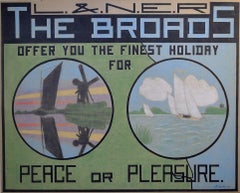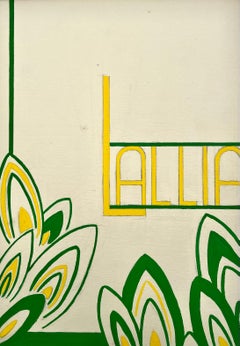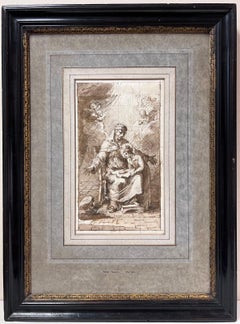Drawings and Watercolor Paintings
1920s Art Deco Drawings and Watercolor Paintings
Pastel, Watercolor
Early 20th Century Art Deco Drawings and Watercolor Paintings
Watercolor
1930s Art Deco Drawings and Watercolor Paintings
Mixed Media, Pen
18th Century Old Masters Drawings and Watercolor Paintings
Chalk
Late 18th Century Old Masters Drawings and Watercolor Paintings
Ink, Watercolor
20th Century Art Deco Drawings and Watercolor Paintings
Gold
1930s Art Deco Drawings and Watercolor Paintings
Watercolor
1750s Old Masters Drawings and Watercolor Paintings
Chalk
1660s Old Masters Drawings and Watercolor Paintings
Ink, Graphite, Pen
21st Century and Contemporary Art Deco Drawings and Watercolor Paintings
Ink, Watercolor
1920s Art Deco Drawings and Watercolor Paintings
Board, Watercolor
1960s Art Deco Drawings and Watercolor Paintings
Vellum, Pencil
19th Century Old Masters Drawings and Watercolor Paintings
Pencil
20th Century Art Deco Drawings and Watercolor Paintings
Ink
1930s Art Deco Drawings and Watercolor Paintings
Mixed Media, Gouache
20th Century Art Deco Drawings and Watercolor Paintings
Ink
1930s Art Deco Drawings and Watercolor Paintings
Chalk
20th Century Art Deco Drawings and Watercolor Paintings
Ink
1930s Art Deco Drawings and Watercolor Paintings
Gouache, Mixed Media
Early 17th Century Old Masters Drawings and Watercolor Paintings
Ink, Watercolor
20th Century Art Deco Drawings and Watercolor Paintings
Gouache
1930s Art Deco Drawings and Watercolor Paintings
Gouache
1970s Art Deco Drawings and Watercolor Paintings
Pencil, Vellum
20th Century Art Deco Drawings and Watercolor Paintings
Watercolor, Gouache
1920s Art Deco Drawings and Watercolor Paintings
Watercolor, Pencil
1980s Art Deco Drawings and Watercolor Paintings
Oil, Board
1920s Art Deco Drawings and Watercolor Paintings
Gold Leaf
1940s Art Deco Drawings and Watercolor Paintings
Pencil, Paper
1950s Art Deco Drawings and Watercolor Paintings
Gouache
1750s Old Masters Drawings and Watercolor Paintings
Chalk
2010s Art Deco Drawings and Watercolor Paintings
Pencil
Mid-20th Century Art Deco Drawings and Watercolor Paintings
Gouache
1890s Old Masters Drawings and Watercolor Paintings
Watercolor, Satin Paper
19th Century Old Masters Drawings and Watercolor Paintings
Pencil
1940s Art Deco Drawings and Watercolor Paintings
Pastel
1850s Old Masters Drawings and Watercolor Paintings
Ink
Early 18th Century Old Masters Drawings and Watercolor Paintings
Ink
1920s Art Deco Drawings and Watercolor Paintings
Pastel
18th Century Old Masters Drawings and Watercolor Paintings
Washi Paper, Color Pencil
19th Century Old Masters Drawings and Watercolor Paintings
India Ink, Paper
19th Century Old Masters Drawings and Watercolor Paintings
Ink, Watercolor
20th Century Art Deco Drawings and Watercolor Paintings
Gouache
1740s Old Masters Drawings and Watercolor Paintings
Chalk
1750s Old Masters Drawings and Watercolor Paintings
Chalk, Ink
2010s Art Deco Drawings and Watercolor Paintings
Pencil
20th Century Art Deco Drawings and Watercolor Paintings
Ink
1930s Art Deco Drawings and Watercolor Paintings
Watercolor, Ink
2010s Art Deco Drawings and Watercolor Paintings
Pencil
1920s Art Deco Drawings and Watercolor Paintings
Watercolor, Ink
Early 17th Century Old Masters Drawings and Watercolor Paintings
Oil
1930s Art Deco Drawings and Watercolor Paintings
Ink, Watercolor
Early 20th Century Art Deco Drawings and Watercolor Paintings
Paper, Ink
1930s Art Deco Drawings and Watercolor Paintings
Ink, Gouache, Pen
20th Century Art Deco Drawings and Watercolor Paintings
Paper, Gouache
16th Century Old Masters Drawings and Watercolor Paintings
Chalk
1910s Art Deco Drawings and Watercolor Paintings
Paper, Conté
20th Century Art Deco Drawings and Watercolor Paintings
Gouache
1780s Old Masters Drawings and Watercolor Paintings
Ink
Drawings and Watercolor Paintings
Revitalize your interiors — introduce drawings and watercolor paintings to your home to evoke emotions, stir conversation and show off your personality and elevated taste.
Drawing is often considered one of the world’s oldest art forms, with historians pointing to cave art as evidence. In fact, a cave in South Africa, home to Stone Age–era artists, houses artwork that is believed to be around 73,000 years old. It has indeed been argued that cave walls were the canvases for early watercolorists as well as for landscape painters in general, who endeavor to depict and elevate natural scenery through their works of art.
The supplies and methods used by artists and illustrators to create drawings and paintings have evolved over the years, and so too have the intentions. Artists can use their drawing and painting talents to observe and capture a moment, to explore or communicate ideas and convey or evoke emotion. No matter if an artist is working in charcoal or in watercolor and has chosen to portray the marvels of the pure human form, to create realistic depictions of animals in their natural habitats or perhaps to forge a new path that references the long history of abstract visual art, adding a drawing or watercolor painting to your living room or dining room that speaks to you will in turn speak to your guests and conjure stimulating energy in your space.
When you introduce a new piece of art into a common area of your home — a figurative painting by Italian watercolorist Mino Maccari or a colorful still life, such as a detailed botanical work by Deborah Eddy — you’re bringing in textures that can add visual weight to your interior design. You’ll also be creating a much-needed focal point that can instantly guide an eye toward a designated space, particularly in a room that sees a lot of foot traffic.
When you’re shopping for new visual art, whether it’s for your apartment or weekend house, remember to choose something that resonates. It doesn’t always need to make you happy, but you should at least enjoy its energy. On 1stDibs, browse a wide-ranging collection of drawings and watercolor paintings and find out how to arrange wall art when you’re ready to hang your new works.





